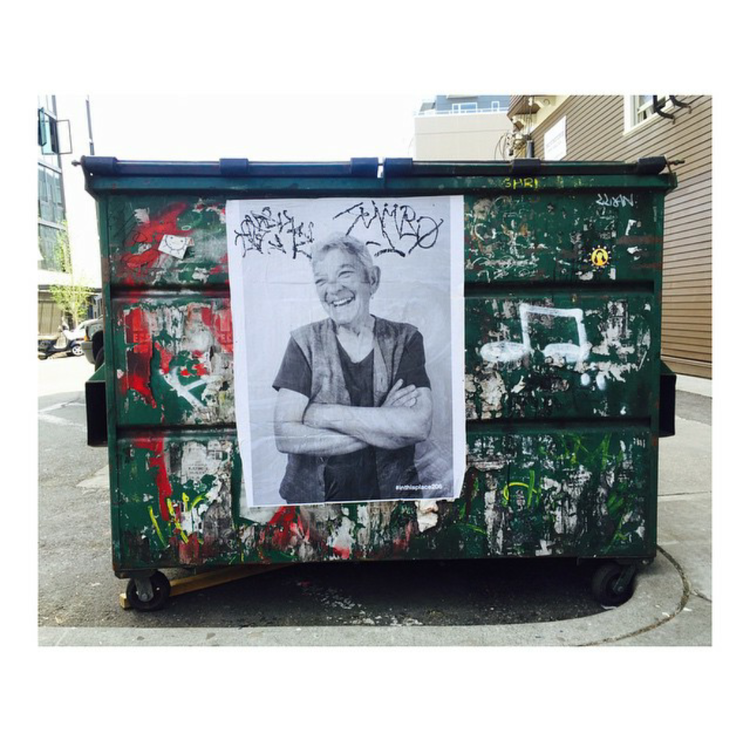Capitol Hill in Seattle is one of America’s largest gay neighbourhoods. During the 1960’s a large gay residential settlement began and the area soon became known as Seattle’s gayborhood.
In an attempt to raise awareness for the gentrification and loss of queer space, artists got together and created the In This Place 206 art project to remind people of the queer history behind Capitol Hill.
Gentrification, a term used to describe a process of renovation and revival in which affluent residents move in causing low income families to become displaced, has been steadily happening in Capitol Hill and many of the LGBTQ community have since left.

The 9 women used in the project were all former residents of the LGBTQ community in Capitol Hill and one of the Artists involved in the project, Nilda Brooklyn told CHS newspaper:
It’s really about taking up the space saying, ‘As you walk by this place, as you stand on this street corner, I stood here, I had a life here, I hung out here, I got my heart broken here. It’s really just a reminder that there’s always somebody who came before us.”
Nilda teamed up with another artist, photographer Adrian Leavitt and asked the 9 queer women who agreed to have their portrait used, three questions — their name, how they identified and where on Capitol Hill was important to them and why. They then placed the portraits around the neighbourhood to see how the public would interact with them.

Nilda said the idea came from her own upbringing:
Having grown up in the queer and lesbian community, Brooklyn is connected to many older queer women. Those direct connections ended up being the subjects for the project.”
Some of the portraits got damaged or had graffiti sprayed on them, but the longest one put up on 15th Avenue lasted 15 weeks. The photograph’s had #inthisplace206 printed on them in order that the artists could see via social media how the public reacted to them.

Nilda went on to say that the area has changed so much and the LGBTQ community and its queer space is diminishing slowly. She says she also feels strongly about reminding people of the history of Capitol Hill.
I think it’s important to document queer history, and I also think it’s really important in the queer community to have multi-generational connections.”
The artists plan to photograph more women for the project in the future.


